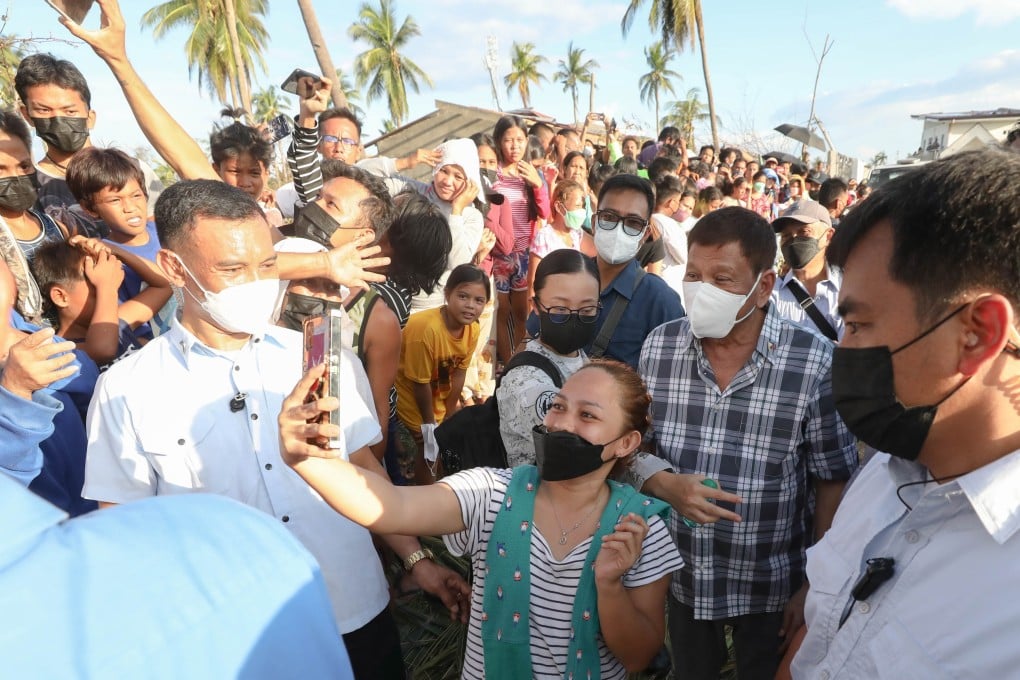As Philippines mops up from Typhoon Rai, government response could become an election issue
- President Rodrigo Duterte, who rose to prominence after Typhoon Haiyan in 2013, gave little warning beforehand and told jokes while visiting hard-hit Cebu province
- Analysts say the massive damage and response of candidates could sway voters in the May 2022 presidential election

As of December 21, the storm had killed at least 375 people, injured 500, displaced nearly 2.3 million in 33 of the country’s 81 provinces, wreaked billions of pesos worth of property and crop damage, and possibly affected the outcome of the May 2022 presidential elections.
Viral photos and videos of the 630 million pesos (US$12.6 million) sports stadium complex, inaugurated only last month by President Rodrigo Duterte, showed it looking as if a bomb had destroyed it.
As it exited the Philippines, Rai (known locally as Odette) did not spare Pagasa, the farthest island west of Palawan and part of that province. The typhoon swept away the new prefabricated structure built by the Philippine Coast Guard only last September to house personnel stationed there, according to spokesman Commodore Armand Balilo.
Little warning
There was little warning from Duterte or the national government that a category five typhoon would hit a week before Christmas.
Duterte first publicly mentioned the typhoon on December 16, the day it made its first landfall in Siargao, but only in passing during a speech to unveil new commuter trains for Manila.
As he wrapped up his brief speech, he added: “On a more urgent note, we are closely monitoring – through various government agencies – the movement of Typhoon Odette … Still, we must remain watchful and careful of the developments.”
The next day, as it battered the islands of central and southern Philippines, there appeared to be no sense of urgency or acknowledgement of the gravity of the situation inside the presidential palace.
